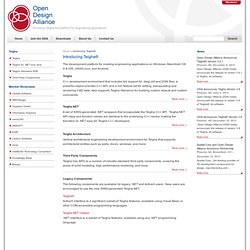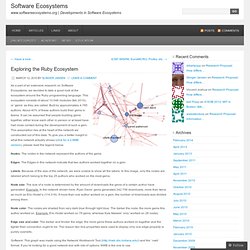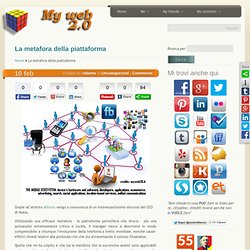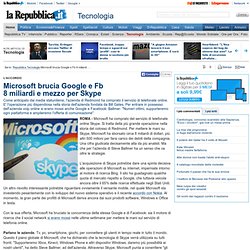

Microsoft, fronda anti-Ballmer "Apple corre, noi arranchiamo.
Android@Home: la domotica, secondo Google. Giacomo Dotta, Un Android in tv e uno nel frigorifero, uno nella lavatrice ed uno nei fili dell’impianto elettrico: Google intende rivoluzionare il mondo della domotica mettendo al centro del sistema l’intelligenza di Android, delle sue applicazioni, della sua pervasività.

Il tutto tramite il progetto Android@Home. L’annuncio è avvenuto nel corso dell’evento Google I/O durante il quale il gruppo di Mountain View ha voluto illustrare il futuro di Android nei suoi vari rami evolutivi. Android@Home è soltanto uno dei progetti in ballo, probabilmente tra i più ambiziosi: sebbene da anni siano stati molti i gruppi ad investire in questo settore, infatti, nessuno ha ancora saputo imporre una soluzione ponte che potesse realmente unire in modo trasversale uno smartphone ed un impianto elettrico, rendendo così possibile tutto quel che la domotica promette da sempre: il controllo personalizzato e completo dell’elettronica casalinga. Amazon.com: the Hidden Empire. Never Miss A Word. Open Design Alliance. The development platform for creating engineering applications on Windows, Macintosh OS X & iOS, UNIX/Linux, and Android.

Teigha C++ development environment that includes full support for .dwg/.dxf and DGN files, a powerful object-oriented C++ API, and a rich feature set for editing, manipulating and rendering CAD data. Also supports Teigha Xtensions for building custom objects and custom commands. Teigha.NET A set of SWIG-generated .NET wrappers that encapsulate the Teigha C++ API. Teigha Architecture Vertical architectural engineering development environment for Teigha that supports architectural entities such as walls, doors, windows, and more. Third Party Components Teigha has API's to a number of industry-standard third party components, covering the areas of solid modeling, high performance rendering, and more. Legacy Components. In memoriam: Microsoft’s previous strategic mobile partners. Microsoft’s new “strategic partnership” with Nokia is not its first.

For a decade the software company has courted and consummated relationships with a variety of companies in mobile and telecom. Here are the ones I can remember: LG. In February 2009 Microsoft Corp. signed a multiyear agreement for Windows Mobile to be included on devices from LG Electronics Inc. LG would use Windows Mobile as its “primary platform” for smartphones and produce about 50 models running the software. Symbian vs Android vs Windows Mobile vs BlackBerry vs iPhone. Ok, so you want to buy a smartphone.

Great choice. Modern smartphones gives you robust email integration, great organization capabilities (notes, calendars et all), great internet browsing experience, and above all, great extensibility through applications. They are mini personal computers that you can carry around in your pocket. Now, the next question is, which one ? The engine behind a smartphone is its Operating System (OS). First lets see a few charts to set the context: Ok, now that the figures are out of the way, lets hit the road and consider each OS on the 2 most important parameters – user interface (how does the OS ‘feel’), and application availability (i.e. how many applications are available to extend the functionality of the phone – think news, social networking, dictionaries, productivity and other apps).
IBM Biomimicry Challenge. Exploring the Ruby Ecosystem « Software Ecosystems. March 12, 2010 by Slinger Jansen As a part of an extensive research on Software Ecosystems, we decided to take a good look at the ecosystem around the Ruby programming language.

This ecosystem consists of about 10.046 modules (feb 2010), or ‘gems’ as they are called. Built by approximately 4.785 authors. About 40% of these authors build their gems in teams. It can be assumed that people building gems together, either know each other in person or at least have had close contact during the development of such a gem. Nodes: The nodes in the network represent the authors of the gems. Edges: The Edges in this network indicate that two authors worked together on a gem. Labels: Because of the size of the network, we were unable to show all the labels. Node size: The size of a node is determined by the amount of downloads the gems of a certain author have generated. Node color: The nodes are shaded from very dark blue through light blue. Click on the picture to get the full version. Openness in mobile software ecosystem « Software Ecosystems.
November 9, 2010 by mohsen It is about 5 months I have already finished my thesis.

The title was “architectural support for openness in mobile software platforms” which initially was introduced here in the last January. The overall aim of the research was identification of openness strategy in mobile platforms based on the software architecture of the platforms. Now, let’s look at the summary of objectives and findings: Research Objective 1: Building a model to describe the architectural openness of mobile platforms Architectural openness model is built based on a typical layered architecture which is applicable to all main mobile software platforms.
Research Objective 2: Defining architectural openness factors by considering the licensing aspects of mobile platforms in the model Although the model shows the platform access and extension methods in different levels, but to demonstrate the openness strategy of a platform, licensing aspects of the platform should also be considered. Risultato della ricerca immagini di Google per. What distinguishes a Software Ecosystem from a Business Ecosystem? « Software Ecosystems. November 22, 2010 by J.

Kabbedijk Both the term of “software ecosystem“, as well as “business ecosystem” are based on the concept of natural ecosystems. The idea of thinking about interacting companies in the terms of an ecosystem was originally introduced by James Moore in the early 90s. Partnership Characteristics within Large Software Ecosystems « Software Ecosystems. April 29, 2011 by J. van Angeren Partnership and membership models are a powerful tool for large software ecosystem orchestrators to manage clusters within their ecosystem.

A partnership model is utilized by a software vendor or platform owner to sustain, manage, cluster and expand their partner ecosystem while open source associations strive to achieve the same with their software ecosystem utilizing a membership model. Both model types are clusters of active participants within a certain section of the ecosystem, that is why we refer to these models as ecosystem participant clusters. The taxonomy above describes the structure of an ecosystem participant cluster. La metafora della piattaforma. Share.

Microsoft brucia Google e Fb 8 miliardi e mezzo per Skype. Come anticipato dai media statunitensi, l'azienda di Redmond ha comprato il servizio di telefonate online.

Coral CEA homepage. Eclipse - The Eclipse Foundation open source community website. Jazz Community Site. Ecosystem Approach To Commercialization March 28v10. Business Ecosystems Overview. A Practioners Guide To Ecosystem Development Sep 3. A Practitioners Guide to Ecosystem Development.